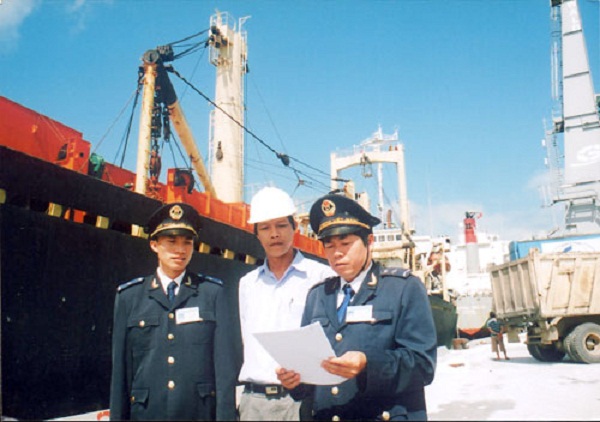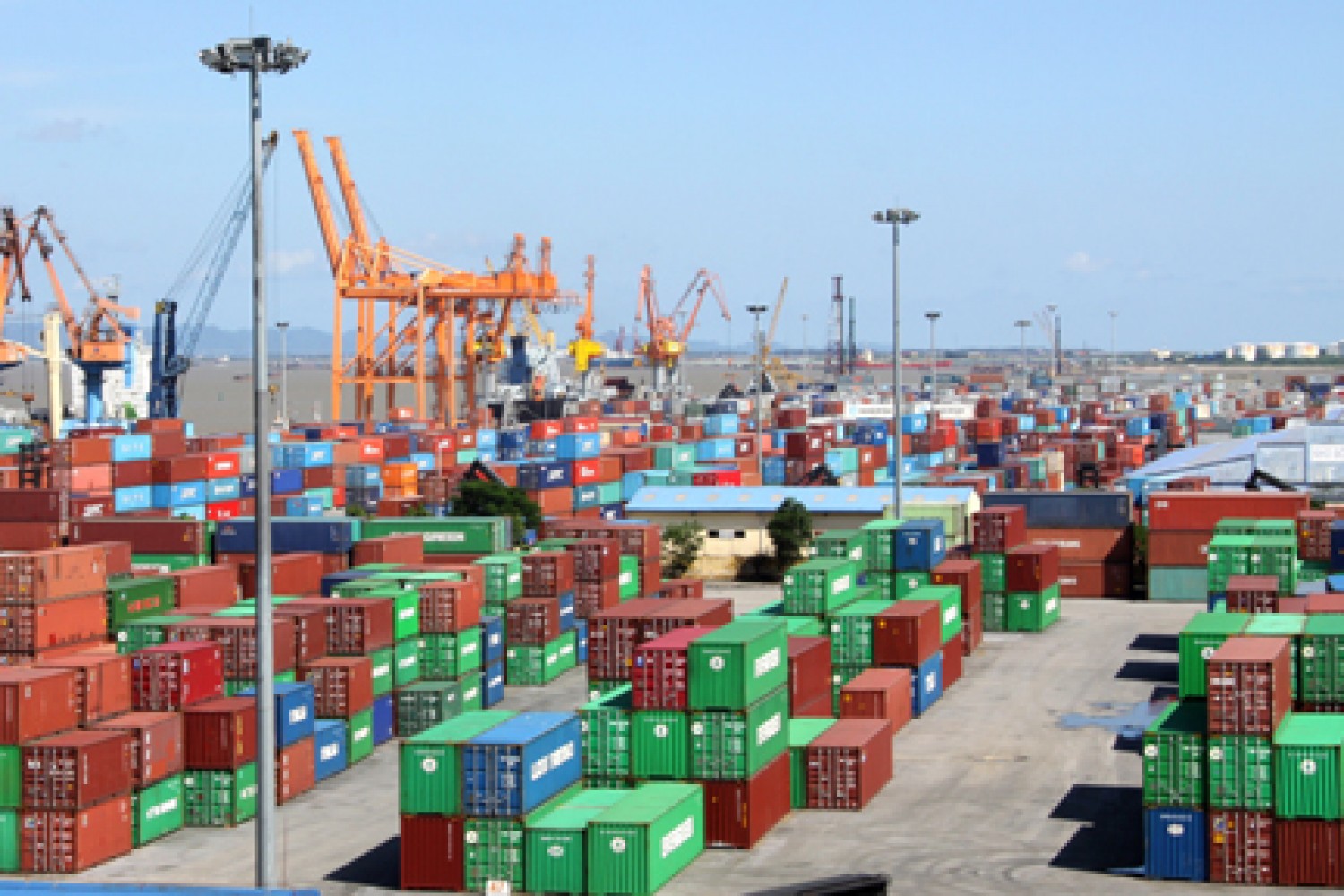TPP - Chapter 01 - General Provisions and Definitions
Chapter 01 TPP Agreement on General Provisions and Definitions within the TPP Agreement.
Chapter 1: GENERAL PROVISIONS AND DEFINITIONS
Part A: General Provisions
Article 1.1: Establishment of a Free Trade Area
The Parties to this Agreement establish a free trade area in accordance with the provisions of this Agreement, under Article XXIV of GATT 1994 and Article V of GATS.
Article 1.2: Relation to Other Agreements
- With the intention of the Parties to maintain this Agreement alongside their existing international agreements, each Party reaffirms,
(a) regarding existing international agreements to which all the Parties are members, including the WTO Agreement, their existing rights and obligations towards each other; and
(b) regarding existing international agreements to which it and at least one other Party are members, including the WTO Agreement, their existing rights and obligations towards that Party or other Parties as appropriate.
- If a Party believes that a provision of this Agreement is inconsistent with a provision in another agreement to which it and at least one other Party are members, upon request, the Parties involved in that other agreement shall consult with a view to reaching a satisfactory resolution. This paragraph does not prejudice a Party’s rights and obligations under Chapter 28 (Dispute Settlement).1
Section B: General Definitions
Article 1.3: General Definitions
For the purposes of this Agreement, unless otherwise specified, the following terms are defined as follows:
AD Agreement is the Agreement on Implementation of Article VI of the General Agreement on Tariffs and Trade 1994, in Annex 1A of the WTO Agreement;
Agreement is the Trans-Pacific Partnership Agreement;
APEC is the Asia-Pacific Economic Cooperation Forum;
Central level of government of each Party is defined in Annex 1-A (Country-Specific Definitions);
TPP Commission is the Trans-Pacific Partnership Commission established under Article 27.1 (Establishment of the Trans-Pacific Partnership Commission);
Investment under regulation of a Party is an investment in the territory of that Party from an investor of another Party made on or after the date of entry into force of this Agreement, or established, acquired, or expanded thereafter;
Customs authority is the authority responsible under each Party’s law for the enforcement of customs laws, regulations, and policies (if any), and is specifically defined by each Party in Annex 1-A (Country-Specific Definitions);
Customs duty includes any duty or charge of any kind imposed on or in connection with the importation of goods, and any surcharges or surcharges related to such importation, but does not include:
(a) a charge equivalent to an internal tax imposed in accordance with Article III:2 of GATT 1994;
(b) fees or other charges commensurate with the cost of services rendered; and
(c) anti-dumping or countervailing duties;
Customs Valuation Agreement is the Agreement on Implementation of Article VII of the General Agreement on Tariffs and Trade 1994, in Annex 1A of the WTO Agreement;
Day means calendar day;
Enterprise means any entity constituted or organized under applicable law, whether for profit or not, and whether privately or governmentally owned or controlled, including any corporation, trust, partnership, sole proprietorship, joint venture, or other association, and a branch of any such entity;
Existing means in effect as of the date of entry into force of this Agreement;
GATS is the General Agreement on Trade in Services, in Annex 1B of the WTO Agreement;
GATT 1994 is the General Agreement on Tariffs and Trade 1994, in Annex 1A of the WTO Agreement;
Goods of a Party means domestic products as understood in GATT 1994 or such goods as the Parties may agree, and includes originating goods of that Party;
Government procurement means a process by which a government acquires the use or ownership of goods or services, or both, for governmental purposes and not with a view to commercial resale or use in the production or supply of goods, services, or information for commercial sale;
Harmonized System (HS) means the Harmonized Commodity Description and Coding System, including its General Rules, Section Notes, Chapter Notes, and subheading notes as adopted and implemented by the Parties in their respective laws;
Heading is the first four digits in the tariff classification number under the Harmonized System;
Measure means any law, regulation, procedure, requirement, or practice;
National means a natural person who has the nationality of a Party according to Annex 1-A (Country-Specific Definitions) or a permanent resident of a Party;
Originating means qualifying under the rules of origin set out in Chapter 3 (Rules of Origin and Origin Procedures) or Chapter 4 (Textiles and Apparel);
Party means a state or separate customs territory to which this Agreement applies;
Person means a natural person or an enterprise;
Person of a Party means a national or an enterprise of a Party;
Preferential tariff treatment means the customs duty rate applicable to originating goods under the tariff schedule of each Party set out in Annex 2-D (Tariff Schedule);
Recovered materials means materials in the form of one or more individual parts that results from:
(a) the disassembly of a used good into individual parts; and
(b) the cleaning, inspecting, testing, or other processing as necessary for improvement to sound working condition;
Remanufactured goods means industrial goods classified under the Harmonized System (HS) Chapters 84 through 90 or HS heading 94.02, except goods classified under HS headings 84.18, 85.09, 85.10, and 85.16, 87.03 or 8414.51, 8450.11, 8450.12, 8508.11, and 8517.11, entirely or partially composed of recovered materials:
(a) have a life expectancy and perform the same as or similar to such a new good; and
(b) are given the same warranty as such a new good by the manufacturer;
Regional level of government of each Party is defined in Annex 1-A (Country-Specific Definitions) [Note: remove bold for "of each ..."];
Safeguards Agreement is the Agreement on Safeguards in Annex 1A of the WTO Agreement;
Sanitary or phytosanitary measure means any measure referred to in paragraph 1 of Annex A of the SPS Agreement;
SCM Agreement is the Agreement on Subsidies and Countervailing Measures in Annex 1A of the WTO Agreement;
SMEs means small and medium-sized enterprises, including micro-enterprises;
SPS Agreement is the Agreement on the Application of Sanitary and Phytosanitary Measures in Annex 1A of the WTO Agreement;
State enterprise is an enterprise owned or controlled by a Party through ownership interests;
Subheading is the first six digits in the tariff classification number under the Harmonized System;
Territory of each Party is defined in Annex 1-A (Country-Specific Definitions);
Textile or apparel goods means goods listed in Annex 4-A (Textile and Apparel Product-Specific Rules of Origin);
TRIPS Agreement is the Agreement on Trade-Related Aspects of Intellectual Property Rights in Annex 1C of the WTO Agreement;2
WTO is the World Trade Organization;
WTO Agreement is the Marrakesh Agreement Establishing the World Trade Organization, done at Marrakesh, April 15, 1994.
Annex 1-A: Country-Specific Definitions
In accordance with Article 1.3, unless otherwise specified, the terms below are defined as follows:
Central level of government is:
(a) for Australia, the Commonwealth government;
(b) for Brunei Darussalam, the national government;
(c) for Canada, the Government of Vietnam Canada;
(d) for Chile, the national government;
(e) for Japan, the Government of Vietnam Japan;
(f) for Malaysia, the federal government;
(g) for Mexico, the federal government;
(h) for New Zealand, the national government;
(i) for Peru, the national government;
(j) for Singapore, the national government;
(k) for the United States, the federal government; and
(l) for Vietnam, the national government;
Customs authority is:
(a) for Australia, the Australian Customs and Border Protection Service;
(b) for Brunei Darussalam, the Royal Customs and Excise Department;
(c) for Canada, the Canada Border Services Agency;
(d) for Chile, the National Customs Service of Chile;
(e) for Japan, the Ministry of Finance;
(f) for Malaysia, the Royal Malaysian Customs Department;
(g) for Mexico, the Ministry of Finance and Public Credit;
(h) for New Zealand, the New Zealand Customs Service;
(i) for Peru, the National Customs and Tax Administration Superintendency;
(j) for Singapore, the Singapore Customs;
(k) for the United States, the United States Customs and Border Protection and, with respect to enforcement, the sharing of information and investigation, Immigration and Customs Enforcement; and
(l) for Vietnam, the General Department of Vietnam Customs;
or any successor customs authority.
Natural person who has the nationality of a Party is:
(a) For Australia, a natural person who is an Australian citizen as defined in the Australian Citizenship Act 2007, as amended, or its successor legislation;
(b) For Brunei Darussalam, a subject of His Majesty the Sultan and Yang Di-Pertuan in accordance with the laws of Brunei Darussalam;
(c) For Canada, a natural person who is a citizen of Canada under Canadian law;
(d) For Chile, a Chilean as defined in Article 10 of the Constitution of the Republic of Chile;
(e) For Japan, a natural person who has the nationality of Japan under Japanese law;
(f) For Malaysia, a natural person who is a citizen of Malaysia under the laws and regulations of Malaysia;
(g) For Mexico, a person who has the nationality of Mexico under Mexican law;
(h) For New Zealand, a natural person who is a citizen as defined in the Citizenship Act 1977, as amended, or its successor legislation;
(i) For Peru, a natural person who has Peruvian nationality by birth or by naturalization, or by choice in accordance with the Constitution of Peru (Constitución politica del Peru) and other relevant domestic law;
(j) For Singapore, a natural person who is a citizen of Singapore as defined in the Constitution and laws of Singapore;
(k) For the United States, a "national of the United States" as defined in the Immigration and Nationality Act; and
(l) For Vietnam, any person who is a citizen of Vietnam as defined in the Constitution and laws of Vietnam;
Regional level of government is:
(a) For Australia, a state of Australia, the Australian Capital Territory, or the Northern Territory;
(b) The concept of regional level of government does not apply to Brunei Darussalam;
(c) For Canada, a provincial or territorial government of Canada;
(d) The concept of regional level of government does not apply to Chile, which is a unitary republic;
(e) The concept of regional level of government does not apply to Japan;
(f) For Malaysia, a state of the Federation of Malaysia according to the Federal Constitution of Malaysia;
(g) For Mexico, a state of the Federation of Mexico;
(h) The concept of regional level of government does not apply to New Zealand;
(i) For Peru, a regional government in accordance with the political Constitution of Peru (Constitución politica del Perú) and other relevant domestic law;
(j) The concept of regional level of government does not apply to Singapore;
(k) For the United States, a state of the United States, the District of Columbia, or Puerto Rico; and
(l) The concept of regional level of government does not apply to Vietnam;
Territory is:
(a) For Australia, the territory:
(i) excluding all territories for whose international relations Australia is responsible other than the Territory of Norfolk Island, the Territory of Christmas Island, the Territory of Cocos (Keeling), the Territory of Ashmore and Cartier Islands, the Territory of Heard Island and McDonald Islands, and the Coral Sea Islands Territory; and
(ii) including Australia’s territorial sea, contiguous zone, exclusive economic zone, and continental shelf over which Australia exercises sovereign rights and jurisdiction in accordance with international law;
(b) For Brunei Darussalam, the territory of Brunei Darussalam, including its territorial sea, and any maritime area beyond the territorial sea of Brunei Darussalam, including the sea-bed and subsoil, over which Brunei Darussalam exercises sovereign rights or jurisdiction according to the laws of Brunei Darussalam and international law;
(c) For Canada, the:
(i) land territory, airspace, internal waters, and territorial sea of Canada;
(ii) exclusive economic zone of Canada, as determined by Canadian law, consistent with Part V of the United Nations Convention on the Law of the Sea (UNCLOS); and
(iii) continental shelf of Canada, as determined by Canadian law, consistent with Part VI of UNCLOS;
(d) For Chile, the land, maritime, and air space under its sovereignty, and the exclusive economic zone and continental shelf where Chile exercises rights and jurisdiction in accordance with international law and Chilean law;
(e) For Japan, the territory of Japan and all the area beyond its territorial sea, including the sea-bed and subsoil, over which Japan exercises sovereign rights and jurisdiction in accordance with international law, including the United Nations Convention on the Law of the Sea (UNCLOS), and the laws and regulations of Japan;
(f) For Malaysia, the territories of the Federation of Malaysia, the internal waters, and the territorial sea and any maritime area situated beyond the territorial sea, including the sea-bed and subsoil, over which Malaysia exercises sovereign rights and jurisdiction according to Malaysian law and international law;
(g) For Mexico, the:
(i) states of the Federation and the Federal District of Mexico;
(ii) islands, including the reefs and keys in adjacent seas;
(iii) Guadalupe and Revillagigedo Islands in the Pacific Ocean;
(iv) continental shelf and the subsoil of these islands, reefs, and keys;
(v) waters of the territorial seas in accordance with international law, and internal waters under Mexican law;
(vi) airspace above the national territory in accordance with international law; and
(vii) any areas beyond the territorial seas of Mexico within which Mexico exercises sovereign rights over the sea-bed and subsoil, and their natural resources, according to international law, including the United Nations Convention on the Law of the Sea (as amended) and its domestic law;
(h) For New Zealand, the territory of New Zealand and the exclusive economic zone, continental shelf, and sea-bed and subsoil over which New Zealand exercises sovereign rights according to international law, but does not include Tokelau;
(i) For Peru, the land territory, islands, maritime areas, and air space over which Peru exercises sovereignty or sovereign rights and jurisdiction in accordance with the Political Constitution of Peru (Constitución politica del Perú) and other relevant domestic and international laws;
(j) For Singapore, the territory of Singapore, its internal waters, and the territorial sea and any maritime area situated beyond the territorial sea, including the sea-bed and subsoil, over which Singapore exercises sovereign rights and jurisdiction according to the laws of Singapore and international law;
(k) For the United States:
(i) the customs territory of the United States, which includes the 50 States, the District of Columbia, and Puerto Rico;
(ii) foreign trade zones located in the United States and Puerto Rico; and
(iii) any area beyond the territorial seas of the United States within which the United States exercises sovereign rights over the sea-bed and subsoil and their natural resources according to international law and United States domestic law; and
(l) For Vietnam, the land territory, islands, internal waters, territorial sea, air space above, and any maritime areas beyond the territorial sea, including the sea-bed and subsoil, over which Vietnam exercises its sovereignty, sovereign rights, or jurisdiction according to its laws and international law.
Note:
-
In this Agreement, the Parties agree that if there is an agreement that provides more favorable treatment for goods, services, investment, or persons than the treatment provided by this Agreement, it does not imply inconsistency within the meaning of paragraph 2.
-
For greater certainty, "TRIPS Agreement" includes any waiver of the provisions of the TRIPS Agreement between the Parties as decided by the WTO Members under the WTO Agreement.TABLE OF CONTENTS
TPP - Chapter 01 - General Provisions and Definitions
TPP - Chapter 02 - National Treatment and Market Access for Goods
TPP - Chapter 03 - Rules of Origin and Origin Procedures
TPP - Chapter 04 - Textiles and Apparel
TPP - Chapter 05 - Customs Administration and Trade Facilitation
TPP - Chapter 06 - Trade Remedies
TPP - Chapter 07 - Sanitary and Phytosanitary Measures
TPP - Chapter 08 - Technical Barriers to Trade
TPP - Chapter 10 - Cross-Border Trade in Services
TPP - Chapter 11 - Financial Services
TPP - Chapter 12 - Temporary Entry for Business Persons
TPP - Chapter 13 - Telecommunications
TPP - Chapter 14 - Electronic Commerce
TPP - Chapter 15 - Government Procurement
TPP - Chapter 16 - Competition Policy
TPP - Chapter 17 - State-Owned Enterprises and Designated Monopolies
TPP - Chapter 18 - Intellectual Property
TPP - Chapter 20 - Environment
TPP - Chapter 21 - Cooperation and Capacity Building
TPP - Chapter 22 - Competitiveness and Business Facilitation
TPP - Chapter 23 - Development
TPP - Chapter 24 - Small and Medium-Sized Enterprises
TPP - Chapter 25 - Regulatory Coherence
TPP - Chapter 26 - Transparency and Anti-Corruption
TPP - Chapter 27 - Administrative and Institutional Provisions
TPP - Chapter 28 - Dispute Settlement
TPP - Chapter 29 - Exceptions and General Provisions
- Cases of land rent exemption and reduction under the latest regulations in Vietnam
- Economic infrastructure and social infrastructure system in Thu Duc City, Ho Chi Minh City
- Regulations on ordination with foreign elements in religious organizations in Vietnam
- Increase land compensation prices in Vietnam from January 1, 2026
- Determination of land compensation levels for damage during land requisition process in Vietnam
- Who is permitted to purchase social housing according to latest regulations in Vietnam?
-

- TPP - Chapter 05 - Customs Administration and ...
- 12:10, 11/07/2024
-

- TPP - Chapter 04 - Textile and apparel goods
- 12:10, 11/07/2024
-

- TPP - Chapter 08 - Technical Barriers to Trade
- 12:10, 11/07/2024
-

- TPP - Chapter 07 - Sanitary and Phytosanitary ...
- 12:10, 11/07/2024
-

- TPP - Chapter 06 - Trade Remedies
- 12:10, 11/07/2024
-

- Notable new policies of Vietnam effective as of ...
- 16:26, 11/04/2025
-
.Medium.png)
- Notable documents of Vietnam in the previous week ...
- 16:21, 11/04/2025
-
.Medium.png)
- Notable documents of Vietnam in the previous week ...
- 16:11, 02/04/2025
-
.Medium.png)
- Notable new policies of Vietnam to be effective ...
- 16:04, 02/04/2025
-
.Medium.png)
- Notable new policies of Vietnam effective from ...
- 14:51, 21/03/2025
 Article table of contents
Article table of contents
